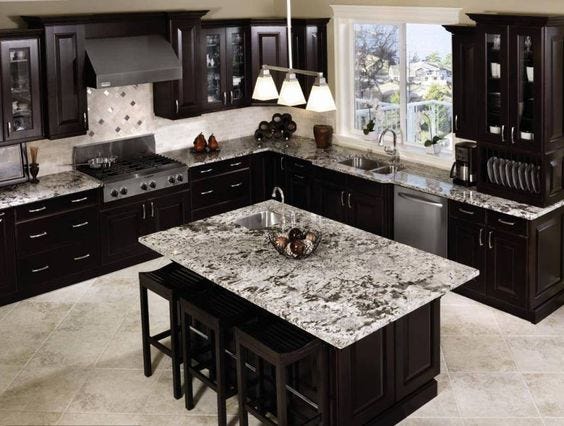Why Are There Black and White Granite Countertops?

Granite colors for countertops in Atlanta vary significantly, but exactly what makes it so variable? Here, you will certainly discover what makes granite kitchen countertops a different shade, its mineralogy, and also its origin. Or, better yet, why are there black and white granite countertops?
Black and White Granite Countertops Explained
What is Granite Countertops in Atlanta?
Granite is one of the most generally known sorts of rocks, utilized in everything from buildings to sculptures. It has actually been made use of for countless years and is regarded as a symbol of standing, toughness, and longevity. Although it ranges in different shades, most buyers prefer to go between black and white countertops in Atlanta.
What Establishes Granite Colors Such as Black and White Granite Countertops?
Granite is an empire of minerals and rocks, primarily quartz, potassium feldspar, mica, amphiboles, and traces of various other minerals. It usually has 20–60% quartz, 10–65% feldspar, and 5–15% micas (biotite or muscovite). The minerals that comprise granite give it the distinct shades we see in various types of granite (e.g. black and white granite countertops).
The most loved proportion of various colored minerals in granite is greatly because of the original source of molten rock that cooled to develop the granite. If the molten rock is bountiful in potassium feldspar, the granite is most likely to take on a salmon pink shade. On the other hand, if the molten rock is abundant in quartz and minerals that make up amphibole, you will likely get black and white granite countertops commonly seen on kitchen or bathroom countertops.
White Granite Countertops
White granite is composed mainly of quartz (milky white) and feldspar (nontransparent white) minerals. The tiny black specks in the granite above are likely little amphibole grains. This could be due to an absence of chemical parts needed to develop amphibole, or the cooling process was not amenable to the formation of amphiboles. If you see a rock that is 100% white, it is not granite but more likely a man-made rock that is developed to look like granite or a quartz (quartzite) countertop.
Black Granite Countertops
Black granite is commonly seen in commercial rock, but it is not granite whatsoever. As said above, granite needs to go to least 20% quartz, which indicates an all-black rock is not granite. Most black granite, in reality, is gabbro, a mafic intrusive igneous rock just like lava. Gabbro is mainly composed of minerals pyroxene, plagioclase, and also percentages of olivine (dark environment-friendly) and amphibole.
Whatever you prefer for your granite countertops, or perhaps between black and white granite countertops in Atlanta, we have them here in Art Stone Granite & Marble. Call us today, so we can set up an appointment. One of our experts will walk you through the process and make sure that your questions are answered.

/image%2F4060307%2F20191226%2Fob_6428af_pexels-photo-1612351.jpeg)


/https%3A%2F%2Fi0.wp.com%2Fimages-prod.healthline.com%2Fhlcmsresource%2Fimages%2FAN_images%2Fcbd-oil-cannabis-leaf-1296x728.jpg%3Fw%3D1155%26h%3D1528)
/https%3A%2F%2Fassets.over-blog.com%2Ft%2Fcedistic%2Fcamera.png)